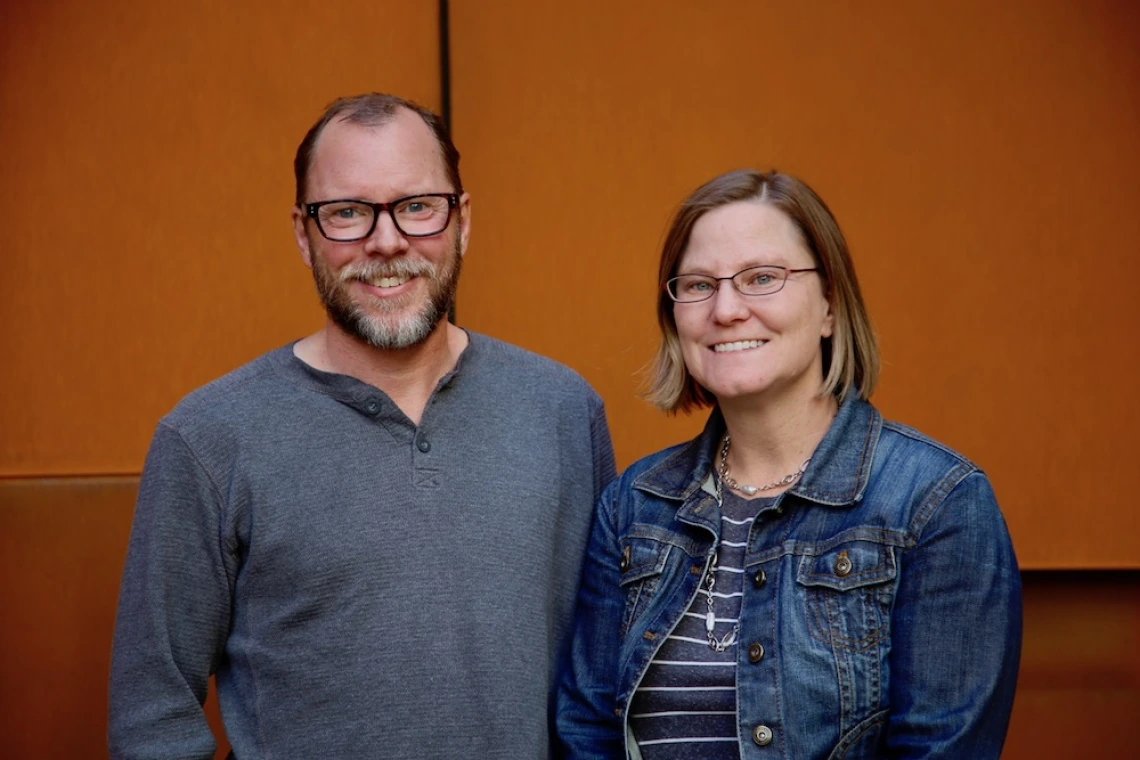Tech Blog: Hurwitz and Watts Collaboration Introduces Rapid Means of Accurate Bacterial Identification

| Listen to the seventh episode of our podcast, Invented Arizona, where we speak with Bonnie Hurwitz and George Watts about their whole genome shotgun sequencing analytics.
|
For the past seventy years, antibiotics have been prescribed to treat a variety of infections. Unfortunately, with the widespread use of antibiotics over this extended period, infectious organisms have adapted and thus become resistant to many antibiotic treatments.
The Centers for Disease Control and Prevention (CDC)(link is external) report that “each year in the United Sates, at least two million people become infected with bacteria that are resistant to antibiotics,” resulting in approximately 23,000 deaths annually [1]. So why exactly is this happening?
When it comes to identifying an infection, whether it be bacterial, fungal or viral, clinicians must rely on outdated and lengthy methods of culture, like those developed by Louis Pasteur in the 1800’s. While other methods have been developed in the past forty years, many still require the use of pure culture, meaning clinicians must still rely on the ability to grow the bacterium to get a sample.
Having worked in next generation sequencing, Bonnie Hurwitz, Ph.D. and George Watts, Ph.D. saw a path to overcome such drawbacks while collaborating at the University of Arizona. Hurwitz, an assistant professor of biosystems engineering and a BIO5 Research Institute Fellow, connected with Watts, an associate professor of pharmacology, because of their common interest in discovering how to rapidly detect microbes in different samples and how to deal with complex microbial communities.
Their five years of shared research has led to a new method of identifying bacteria that uses “whole genome shotgun sequencing" to look at the entire genomic content of an organism or many organisms within a single sample.
This method provides the ability to detect what organisms are present with any virulence factors or drug resistance genes that may be important for the treatment of a disease. For example, understanding that a patient not only has a Staphylococcous aureous infection but that the infection is methicillin-resistant as well is critical for determining proper treatment.
By providing the specific bacteria, resistance and virulence, the whole genome shotgun sequencing-based analytics helps to rapidly increase accurate diagnoses while decreasing the prescription of broad-based antibiotics and cost of treatment. Speed is a factor when virulence is high; Hurwitz and Watts have demonstrated that they can identify a variety of bacteria in just twelve hours.
In application, the impact of Hurwitz and Watts’ technology spans many patient groups, from those suffering from sepsis to the immunocompromised to diabetics and more.
When it comes to changing patients' lives, Hurwitz noted that “modern techniques depedent on culture are not going to get us there. It’s really going to be about looking at the organisms in their full genetic detail that is going to make us be able to transform infectious disease diagnosis.”
To learn more about this technology, visit:
UA14-034 Precise, Accurate Bacterial Identification System
Listen and Learn: Listen to Episode 7(link is external) of the Invented Arizona podcast, featuring this technology!
To learn more about other bacteria-related technologies available from the University of Arizona, visit:
UA16-179 Rapid, Accurate Diagnosis of a Wound Infection with a Smartphone
Resources:
[1] “Antibiotic / Antimicrobial Resistance.” Centers for Disease Control and Prevention, Centers for Disease Control and Prevention, 8 Jan. 2018, www.cdc.gov/drugresistance/index.html(link is external).

